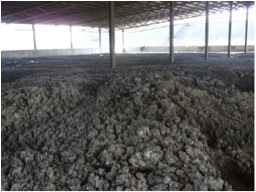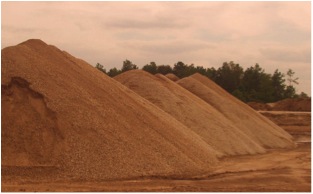ESR Process (PATENTED)
Technical Information
A schematic of the Eco-Solid Recycle Process is shown in the figure below. The process requires a dewatered sludge feed with between 7 and 50% dry solids.
Inside the reactor the sludge is pressurized to between 200-500kPa. Since the reactor is pressurized all the heat generated by the chemical reaction is used to elevate the temperature of the biosolids, i.e., no heat is lost due to vaporization. This means that the process is more thermally efficient than conventional lime stabilization processes. At a raised pH and elevated temperature, ammonia (contained within the biosolid) is released. The release of ammonia further enhances the pathogen destruction.
The combination of high temperature, high pH and the biocide effects of the ammonia ensures that the biosolids are pathogen free in accordance with the most stringent enhanced treatment (Class A/Exceptional Quality) requirements. The process was approved by the US Environmental Protection Agency on this basis.
The ESR results in a high solids product without bad odors. This "Eco-Solid" is stackable and can be stored for long periods before use as a soil enhancer, or for a variety of other applications.

The process comprises mixing the dewatered sludge and calcium oxide (quicklime) in a hopper which is then transferred into a continuous plug-flow reactor. The amount of calcium oxide required in the process can vary between 15-65% of the dry solids, depending upon various factors; including the temperature of the raw sludge and the requirements of the final product.
As the materials mix, the calcium oxide quickly reacts with the dewatered sludge, raising both the temperature and the pH of the material. The temperature of the sludge is raised to between 60oC and 80oC, and the pH of the material to between 11 and 12.

Treated material is discharged from the main reactor through a restricting orifice and passed into a chamber having a lower or reduced pressure. As the pressure is released; steam, ammonia, amines and volatile solids are vaporized and recovered in a water condenser. This liquid is an aqueous ammonia nitrogen product which can either be used as a nitrogen source (called "Eco-Liquid") or recycled to the treatment plant's headworks. This controlled removal of ammonia from the biosolid results in an overall reduction in the nitrogen content of the biosolid, which in turn allows a high application rate when the biosolid is applied to land.
